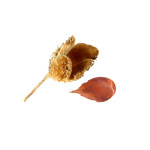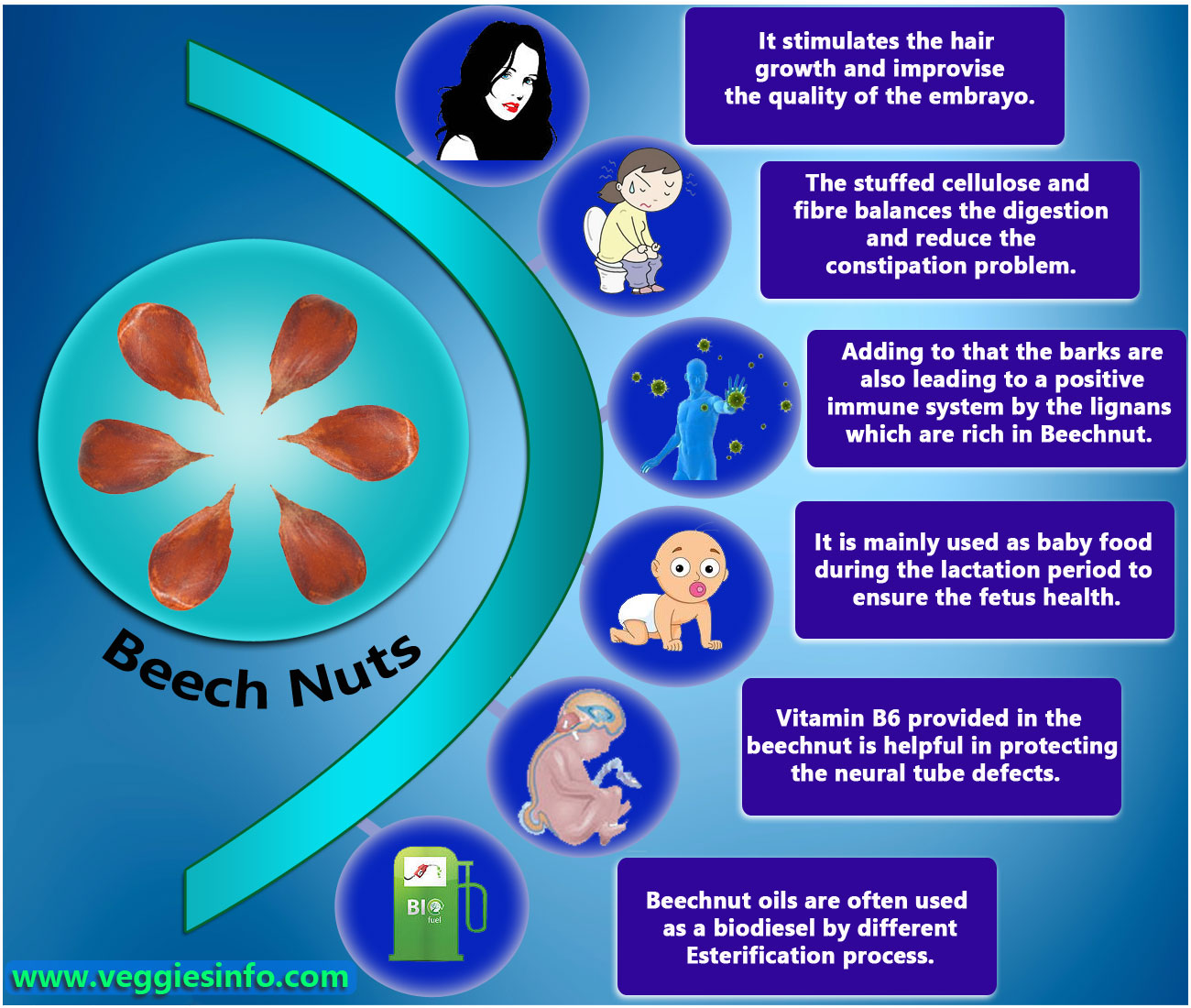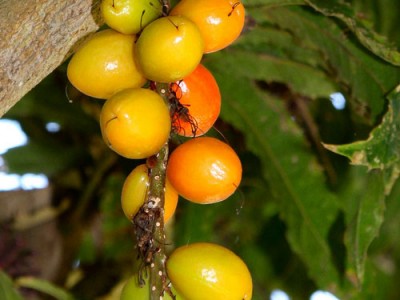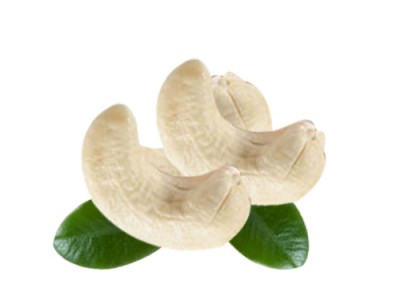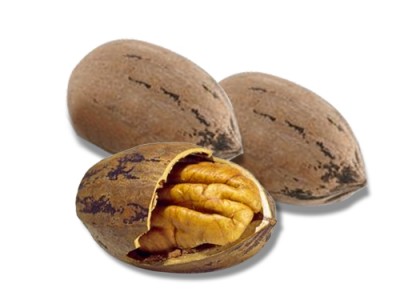
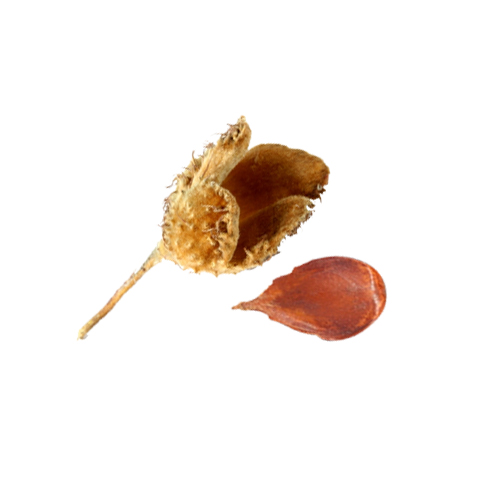
Beech Nut Nutrition And Health Properties
Beechnut
Beechnut is botanically termed as fagus. It is a three sided nut with a brown colored outer core. Asia, Europe, Canada and North America are the natives of Beechnut. The leaves of the beechnuts are slightly oval with saw toothed edges. It has a trivial root system. It can last for more than 400 years. It starts to produce the nuts at the 40th year from planted and huge amount of nuts at the 60th year. Those nuts are not yielded every year but after a couple of years. They are entirely exposed to spring and get frozen. In between September and December the seeds get ripened.
More than 1000 nuts per pint were grown at every yield. High blight leads to fall of the seed and sometimes the seed lose its nut after a massive dive. This process provides the path to develop a new plant to grow unknowingly. The upcoming generation can enjoy the yield of beechnuts. It grows upright for 80-110 feet. The roots were massive and hulky with large trunks. It grows taller and regrets the other baldachin trees for getting direct sunlight to grow more. There are eleven species of beechnut tree around the world.
They are
- Japanese beech – fagus crenata
- Chinese beech –fagus engleriana
- South Chinese beech –fagus longipetiolata
- Japanese blue beech –fagus japonica
- American beech –fagus grandifolia
- Shining beech –fagus lucida
- Mexican beech –fagus mexicana
- Oriental beech –fagus orientalis
- Taiwan beech –fagus hayate
- European beech –fagus silvatica
- Crimean beech –fagus taurica
Among these eleven varieties American beech is the famous one for its shape and size. American beechnut has the shiny bark and slim branches. The bunchy appearance creates an elegant look. Beechnuts are mostly grown in highly fertile soil especially the white and limestone soil and it avoids the underlying places where the water can be easily interpolated. The dispersion takes place in two ways. One is normal as other trees do by spreading the seedlings through various external form of excretion and another method is by growing the new plant from its root sprouts in different locations. Also it is grown at the places of high exposure to sunlight. It is popular for natural dye extract and burned to get rid of the cold. The oil from beechnut is used for cooking and also for lighting the lamp.
The Haudenosaunees developed a cream from beechnut oil mixed with the bear grease to get rid of the mosquito bites. They also prepared some drinks from the nuts and also for garnishing with berries. The beechnut saw dusts with flour were undergone for some preparation to get beechnut bread.
When the beechnut gets ripened it falls down and illuminates a brown carpet like appearance. It is a complete edible nut but having very little amount of tannin which is comparatively lesser than the acorns have. Those nuts can be eaten as whole but the outer case is too hard to open without a knife. The best alternative to open the beechnut is to collect some of them and keep it undisturbed for a day, the next day you can see the nut opened which shows the eatable fleshy nut.
Health Benefits of Beech Nut
The roasted nut is really mouth watering in taste. Beechnut is a great source for various separations of food and other bi products. It contains appreciable amount of protein, about 22% of its whole content. It is offering the nectarous taste with crunchy spills.
It is also used for feeding pigs because after a prolonged feed of beechnut, flesh of the pig became tender and easy to digest.Grounded beechnuts are a preferable substitute for coffee which is free from caffeine. The oil extracted from the beechnut is rich in protein and can be used for toppings as like olive oil. Over consumption of beechnut leads to ill effect due to considerable amount of tannin content.
- Beechnut is very low in cholesterol, sodium and a good source of manganese.
- Low sugar and maintains the blood sugar level.
- The beechnut is burned to charcoal and used for heating.
- It is mainly used as baby food during the lactation period to ensure the fetus health.
- Vitamin B6 provided in the beechnut is helpful in protecting the neural tube defects.
- It stimulates the hair growth and Improvise the quality of the embryo.
- The stuffed cellulose and fiber balances the digestion and reduce the constipation problem.
- Not only the nuts but also the leaves are boiled and turned to decoction works as an anesthetic agent. Leaves were eaten during the famine.
- After a fine processing of the barks, can be used as an anti- oxidant.
- Adding to that the barks are also leading to a positive immune system by the lignans which are rich in Beechnut.
- It acts as a compressing agent for head-aches and other pain related issues.
- Beech is also works as a detoxifying agent while taken in as any form.
- The branches are acting as a disinfectant although by applying on the wounds as a paste. The same paste itself acts as an anti-blemishing agent for the skin.
- It is very much good for both external and internal usage.
- Anti-oxidants present in it overcome the cell dispersion and even cancers.
- Beechnut oils are often used as a biodiesel by different Esterification process.
Nutritional Value of Beechnuts
| Principle | Nutrient Value | Percentage of RDA |
|---|---|---|
| Energy | 363kcal | 11% |
| Carbohydrates | 9g | 3% |
| Fat | 14g | 22% |
| Protein | 1.7g | 3% |
| vitamin C | 13mg | 7% |
| Calcium | 0.3mg | 0% |
| Copper | 0.2mg | 9% |
| Iron | 0.7mg | 4% |
| Magnesium | 0.0mg | 0% |
| Manganese | 0.4mg | 19% |
| potassium | 285mg | 8% |
| Phosphorous | 0.0mg | 0% |
| Zinc | 0.1mg | 1% |
| Water | 1.8g | 2% |
Watch Out Of Toxic Beechnut
Some major parts of the Beechnut are highly toxic. It should not be taken in as whole. Without knowing the characteristics of the beechnut don’t hunt and get caught in a critical situation. Be careful with what type of beechnuts are you claiming and consuming.

